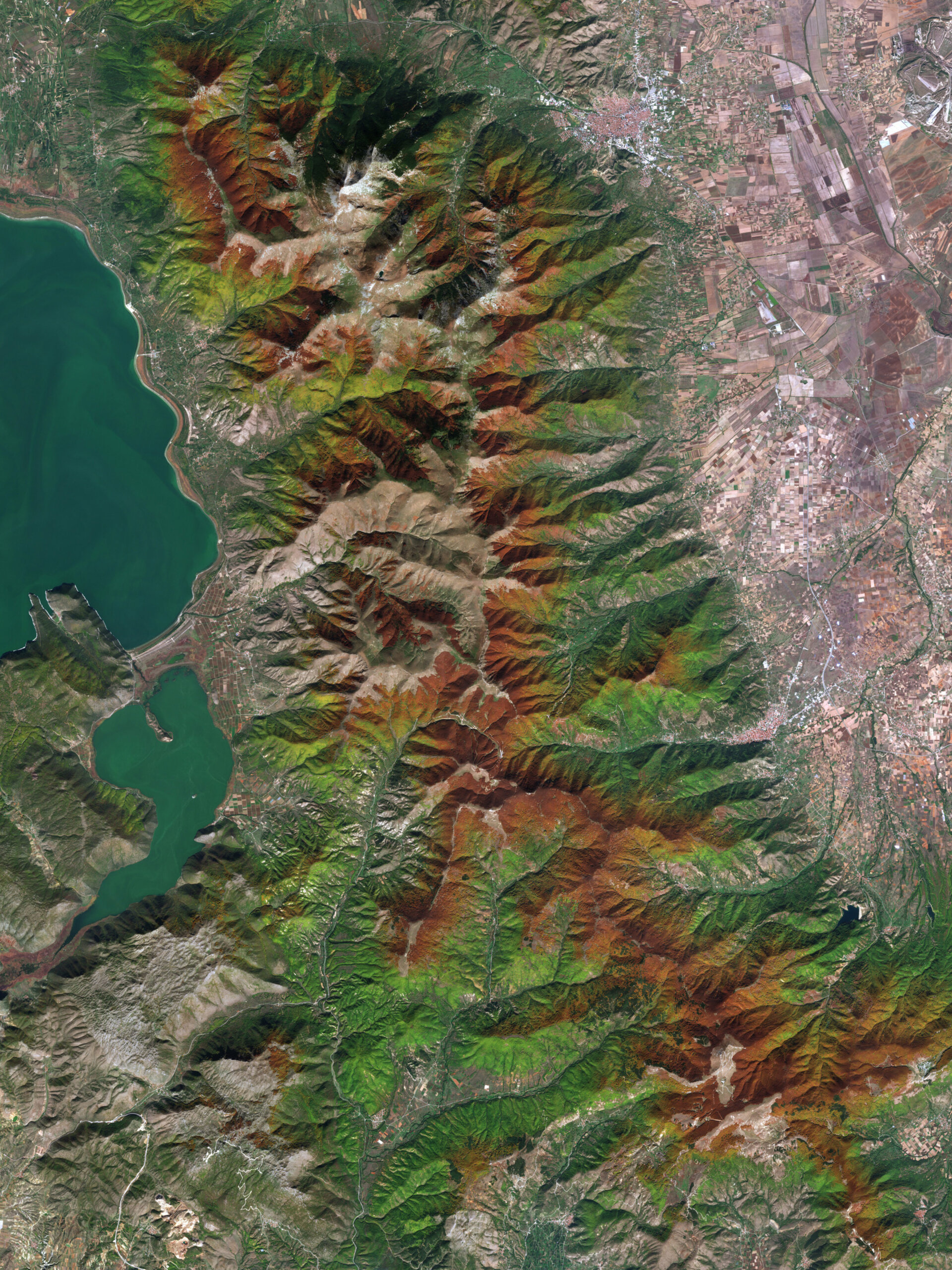08/11/2024
887 views
20 likes
This compilation of images, captured by the Copernicus Sentinel-2 mission, showcases the characteristic hues of autumn in different European countries.
Autumn foliage is one of nature’s most stunning displays, turning deciduous forests into landscapes painted with vibrant colours. As temperatures cool and daylight shortens, deciduous trees cease producing chlorophyll so that leaves turn yellow, orange and red – the colours of autumn.
The images below, from October 2024, capture these colours across the Tuscan-Emilian Apennines in Italy, the western border of Greece and North Macedonia and the southeastern Carpathian Mountains in Romania.
Click on the images to learn more and to explore them in full resolution.
The shades of brown and green visible in the images depend on the species of tree, the weather, altitude and orientation of the mountain slopes.
The most common tree in these areas is the European beech, or Fagus Sylvatica. As shown in the map below, the European beech extends from southern Scandinavia to southern Italy and from Spain to northwestern Türkiye.
The highest probability of European beech being present is highlighted in yellow in the map.
With its broad, smooth leaves, which typically turn deep gold and bronze in autumn, the beech creates dense, golden-bronze canopies over areas big enough that they can be clearly seen from space.



